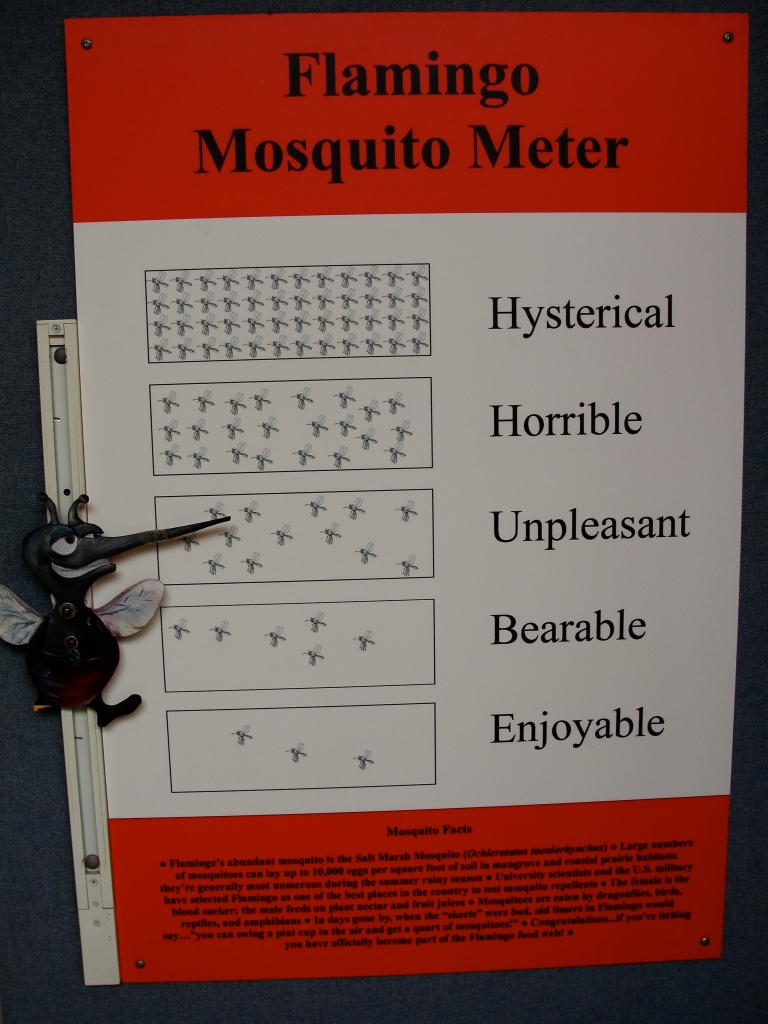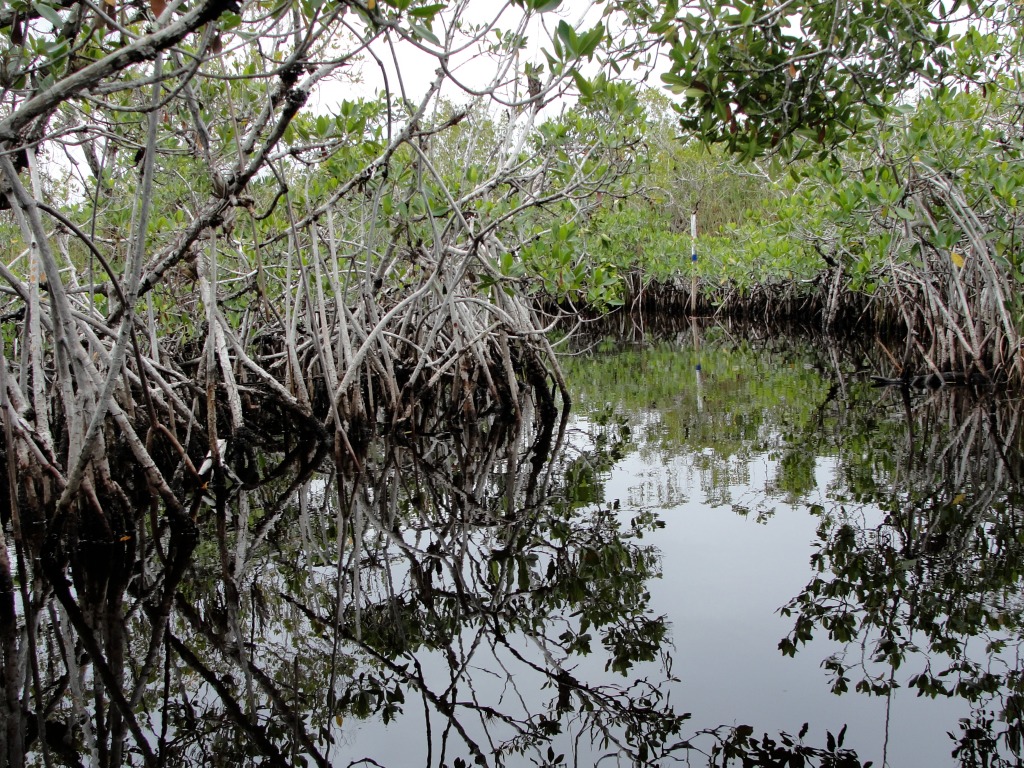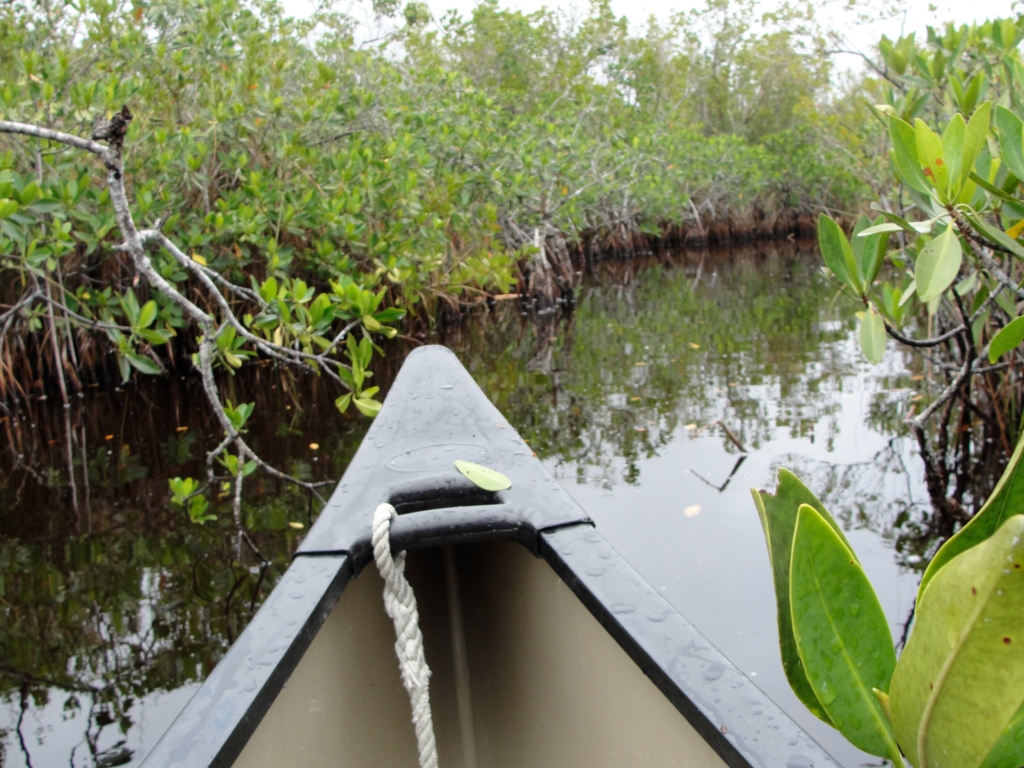The rain was pounding.
The gray skies had opened up and the water hadn’t stopped falling for the last four hours. Our canoe weaved through the dense mangrove trails and we were cold and sopping wet. Trying to navigate through the dense weather, my crew and I were searching for the guide poles that led the trail. Sitting in the second row of the canoe, I tried to synchronize my paddling with my friend Carolina, steering and leading from the front. The waters had risen considerably from the night before and the wind was pushing our canoe across making it difficult to keep it on course.
As we pulled out into a clearing of open water, we suddenly saw waves in front of the canoe rise into a torpedo-like shape. The streamlined form glided near the top of the surface, catching us all with a mixture of surprise and reserved fear. Picking up speed, the waves torpedoed mere feet from the bow of our canoe and what we saw caught us with excitement.
For the longest time, I wanted to camp out in the backcountry of the Everglades. These “primitive” campsites, are far from the electricity and amenities that the front country sites offer. When I heard about National Park Week, I got in touch with my friend Veronica who made the arrangements and chose our site.
The backcountry of the Everglades stretches for over 700 square miles. It is a landscape unlike any other, encompassing all of Florida’s southern half with swamps, waterways, and dense mangrove forests. Camping is limit to three types of sites: beaches, land sites, and chickee hut platforms. All sites except one are accessible only by kayak or canoe. We wanted to get deep into the waterways, so we opted for the area known as “Hell’s Bay”.
As we counted down the days to our trip, Florida revealed its wild spring weather (torrential spring downpours) and the weather worsened. We debated between ourselves about taking our chances in the rain and figured we’d forgo comfort and just do it anyway. Carolina, Veronica, her boyfriend Ruel, and I made the two hour drive towards the area known as Flamingo, the southernmost point of the mainland United States. Checking in at the ranger station, the rain had thankfully slightly let up, so we checked in at the rangers station and picked our campsite, called “Lard Can Camp”.
The three of us loaded our gear and set off in our canoe for the four mile trek to the campground. Our trip started off ominously just minutes after we had left the dock and winding in the deep mangrove forests, we barely grazed a hornets nest that was overhanging the river. Guiding our trail were sets of numbered plastic tubes that lined every twist and fork in the river. We started off at marker #1 and our campsite was at marker #154. Several times, the bush had grown to such a height where we couldn’t see the next marker and had to blindly guess the next turn. Our better pathfinding and judgement took hold and we made the right decision, leading us through every bend in the river.
The trip is only four miles, but the twists in the trail made it feel much longer, and after three and a half hours of paddling and trying to locate our site, we came across the buoy marked “Lard Can”. On the side of a large clearing, a dock beckoned our campsite, and with relief and a fine sense of accomplishment, we pulled our canoe ashore.
Our campsite was made up of a small wooden dock, a flat clearing for our tents, and a run down looking port-a-potty. We quickly set up our tents, a large dome tent and a smaller tent to store our supplies, and enjoyed a let up in the rain that gave us clear clouds for the rest of the day. Away from everything, deep in the heart of the river, there was a remarkable silence and sense of serenity. The mosquitoes had died down to a minimum and sitting on the dock as the sky changed colors throughout the day was a welcome respite from the daily rush of civilization.
As the night fell on the camp, we munched on our dinner: Turkey sandwiches and sticks of jerky. Ruel and Veronica started the fire and we roasted the kettle popcorn, sitting out on the wooden planks and listening to a wide variety of animals that lit up the night with calls, shrieks, and whistles. Sitting along the remarkably still water we heard voices in the distance approaching our camp, and before feeling like some ranger was on their way to put out our fire, a couple in their dual kayak, fresh from having accidently fallen in the water, pulled out of the darkness and stumbled upon our site. The more, the merrier, so we helped them set up their tent and sat up into the late hours sharing stories and trail mix on the dock before crawling back into our campsite and drifting off to sleep as the rain once again began to pour.
When we awoke, the rain was still coming down hard. It had collected under our tent so that moving around felt like walking on a waterbed. After another go/no-go decision, we decided once again to forgo the rain and canoe back up the trail. After dismantling the small tent and realizing that dry clothes weren’t an option, we loaded the canoe and took off immediately heading into the higher water.
That “torpedo” had caught us all unaware, and the initial fear was that we had run into a rather large gator. As we looked back we watched the unmistakable finned tail and fin come swooping out of the water and realized we had just had a close encounter with one of the few river dolphins that glide the waterways of the Everglades.
With the adrenaline kicking from our encounter, and our paddling greatly improved from the day before, we headed back into the thick mangrove bush, encountering two snakes sliding in the water, and keeping our heads low for whatever may be in the branches above.
 Our group: Mike (Me) Carolina, Veronica, and Ruel soaked but happy and accomplished at the end of our adventure.
Our group: Mike (Me) Carolina, Veronica, and Ruel soaked but happy and accomplished at the end of our adventure.In the pounding rain, we followed the plastic tubes and found the starting point, high fives and celebrations for what was one of the more unique adventures I’ve been on. We checked out of the rangers station, still sopping wet, and began our drive out of the park, as our car went down the straight road, we caught site of the one thing we had hoped to avoid in our canoe: a giant gator walking across the side of the road.
Getting to see the backcountry of the Everglades is an opportunity unlike anything else. What people see from the more popular northern Everglades is only scratching the surface of the entire park. The trails and mangroves weave into an intricate network of life, sustained by the rain that was prevalent our entire trip. Looking back, we were blessed to see it in the rain. It’s like seeing a factory at work. The Everglades has been plagued and decimated in recent decades by development and urban change, but seeing how the rain sustains the life and the river brought a brand new perspective on the landscape.
Written by guest contributor to MiamiRealEstateCafe.com: Michael Restivo – MikeOffTheMap – Adventure Blog












